Recent Articles
Popular Makes
Body Types
10 Things You Need to Know About the 2017 Lincoln Continental
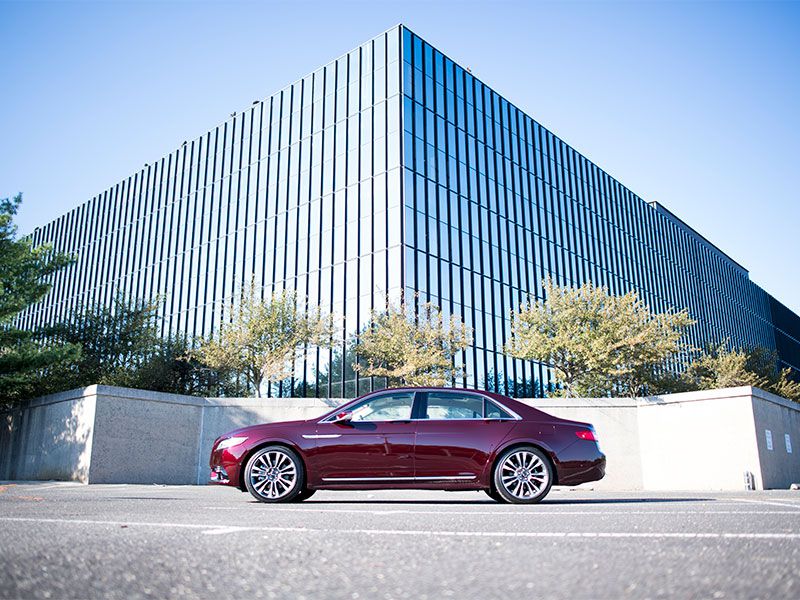
2017 Lincoln Continental exterior profile ・ Photo by Lincoln
Continental was added to the Lincoln family by Edsel Ford in 1939, the name given to a stylish V12 coupe that went on to exert a big influence on U.S. automotive design, particularly in the years following WWII. Sadly, Edsel Ford wasn’t around to guide the evolution of the Continental—or the fortunes of Ford Motor Company. He died in 1943. In the decades since, the Continental badge has been worn by some pretty ho-hum cars. Exceptions: the splendid (and expensive) Mark II, of 1955-‘56; and the 1961 – ’65 Continental, offered as a sedan and four-door convertible, with rear-hinged rear doors (aka suicide doors). Very cool. Now Lincoln has resuscitated the name for a new top-of-the-line premium sedan, conceived to restore prestige to a brand that would be on the edge of the financial abyss if it wasn’t for the big Navigator SUV. And mainland China. What do you need to know? Let’s take a look.
1. Where does it fit?
Technically, the Continental is pitted against autobahn stalwarts like the Audi A6, BMW 5-series, and Mercedes E-class, as well as the Lexus LS and Lincoln’s crosstown rival from Cadillac, the CTS. But the marketing people don’t portray it as a sports sedan. The idea seems to be elegance, outside and in, with lots of room, a smidgen of innovation, and the option of plentiful power. It’s not the kind of sedan that shows to advantage on the Nurburgring. But it’s capable of speed and gobbles up big stretches of interstate in quiet comfort. In a word, it’s an American take on luxury. You could ask Matthew McConaughey.
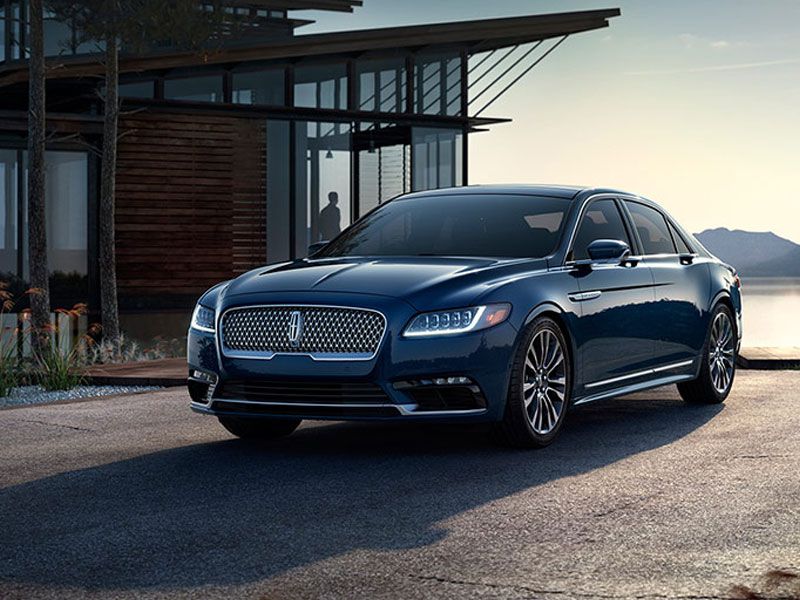
Photo by Lincoln
2. Haven’t we met before?
The Continental is big, elegant, and understated. Also, you may find the styling strangely reminiscent of a super luxury brand from England. Continental design boss David Woodhouse stated that the goal was to avoid looking like one of the Teutonic sedans. “We don’t want to imitate the Germans,” he said. And in this he succeeded, to the extent that the Continental’s unveiling at the 2015 New York Auto Show drew flak from Bentley design boss Luc Donckerwolke, who thought the new Lincoln looked far too much like a Bentley sedan. Well, maybe. But, so what? Derivative and handsome are not mutually exclusive.
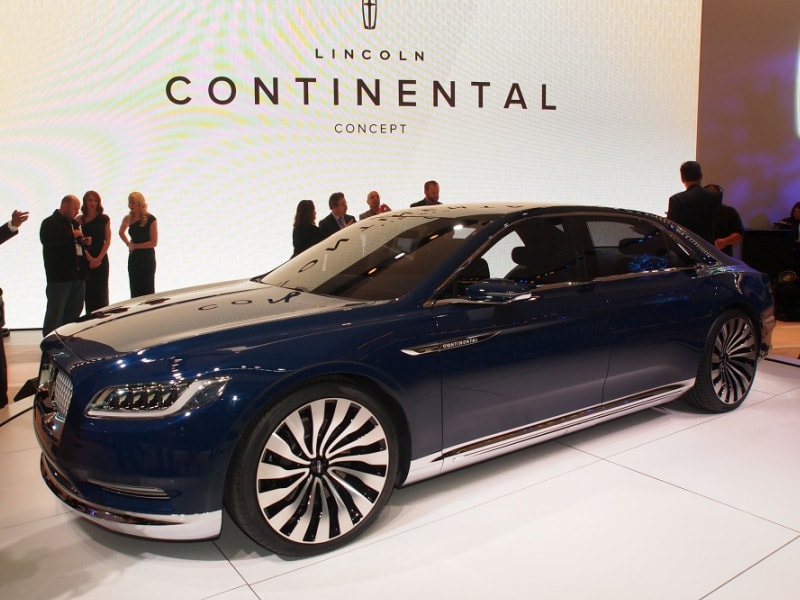
Photo by Lincoln
3. What lies beneath?
When William Clay Ford was given creative control of the Continental Mark II in the early 1950s, his charter was almost totally devoid of restraints. New chassis, new sheetmetal, new engineering and design staffs, even a new assembly plant. The car that emerged was princely—with princely pricing, over $10,000, a lot of money in 1955, more than any contemporary Cadillac. But the days when that sort of approach—dedicated chassis and body for a limited production car—are long gone. The latest Continental is based on architecture adapted from the Ford inventory (Fusion sedan, Edge crossover), front-wheel drive foundations in a market dominated by rear-drive sedans. Does this matter? Yes, to many. But not to everyone. And it’s that group, those who don’t really care which end of the car provides propulsion so long as it delivers on luxury, that’s the demographic target for this new car.
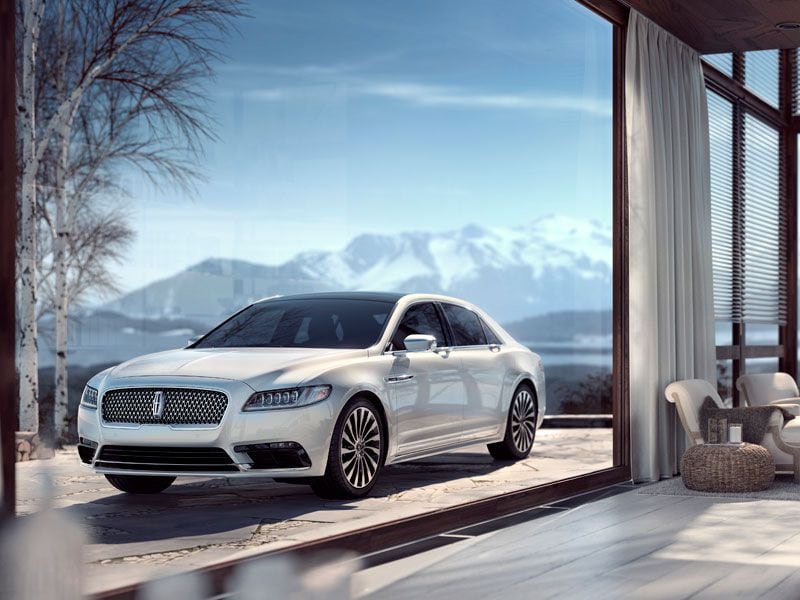
Photo by Lincoln
4. What’s the top engine?
Continental intenders can choose from three engines, two of them turbocharged, one naturally aspirated. It’s interesting that Lincoln avoids using Ford’s EcoBoost label in connection with the two boosted engines, lest customers think they’re merely reconstituted from the Ford central power warehouse. Which to some extent they are, although the top-of-the-line 3.0-liter turbo V6 (400 horsepower, 400 pound-feet of torque) is exclusive to the Lincoln division.
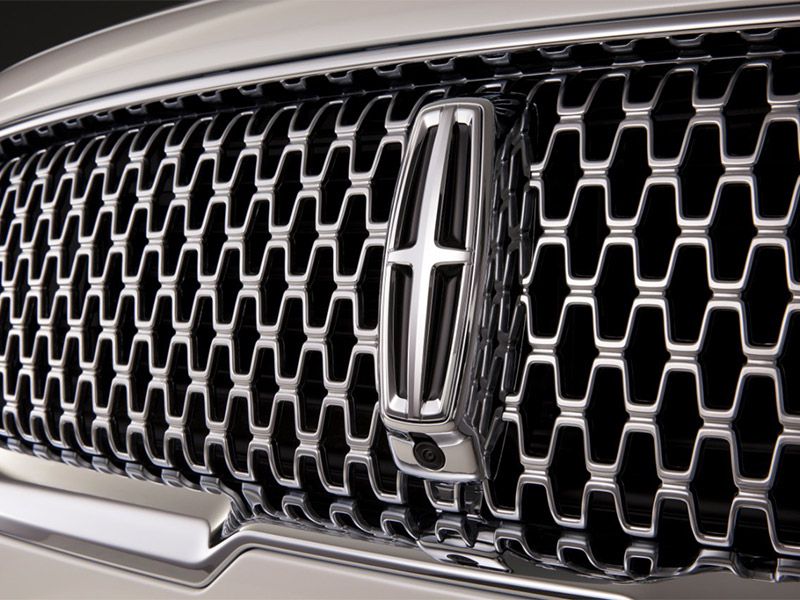
Photo by Lincoln
5. Is there a 4-cylinder?
Unlike the Euro target rivals, Lincoln avoided installing a 4-cylinder engine behind the Conti’s Bentleyesque grille, a grille design soon to be shared across the entire corporate vehicle range. (A four could still be perceived as heretical to U.S. buyers in a car with a heritage that included V12s, although a 2.0-liter 4-cylinder turbo has been green-lighted for the Chinese market.) The base powerplant is a naturally aspirated 3.7-liter V6 (305 hp, 280 lb-ft), and the next step up is Ford’s 2.7-liter turbo V6 (335 hp, 380 lb-ft). All are paired with a 6-speed automatic that includes paddle shifters for manual operation, All-wheel drive is included with the 3.0-liter turbo, optional elsewhere. The basic (if that’s an appropriate word) Continental is front-drive.
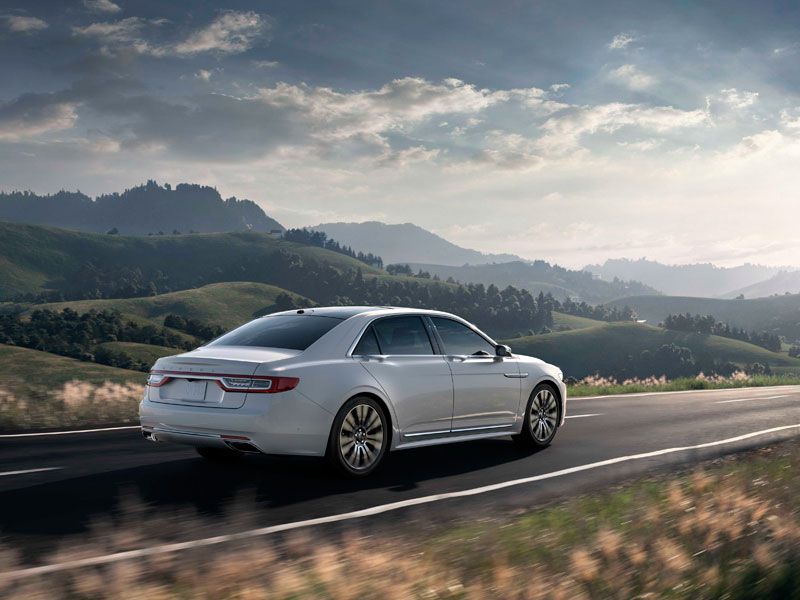
Photo by Lincoln
Is it as substantial as it looks?
After absorbing the Continental’s specs, we wondered whether its rate of forward progress would be competitive compared to the Teutons. Listed curb weights range upward from two tons, with a loaded all-wheel drive 3.0 turbo tipping the scales at more than 4500 pounds. This seems excessive at a time when most carmakers are working to pare mass from their offerings, with Ford among the leaders thanks to the aluminum-intensive F-150 pickup. Nevertheless, the turbo’s formidable low-end grunt gets the Conti up and across the intersection in a respectable hurry, reaching 60 mph in about five seconds. Would it be quicker if Ford had managed to keep curb weights under the two-ton level? Of course. Would that matter? Probably not much.
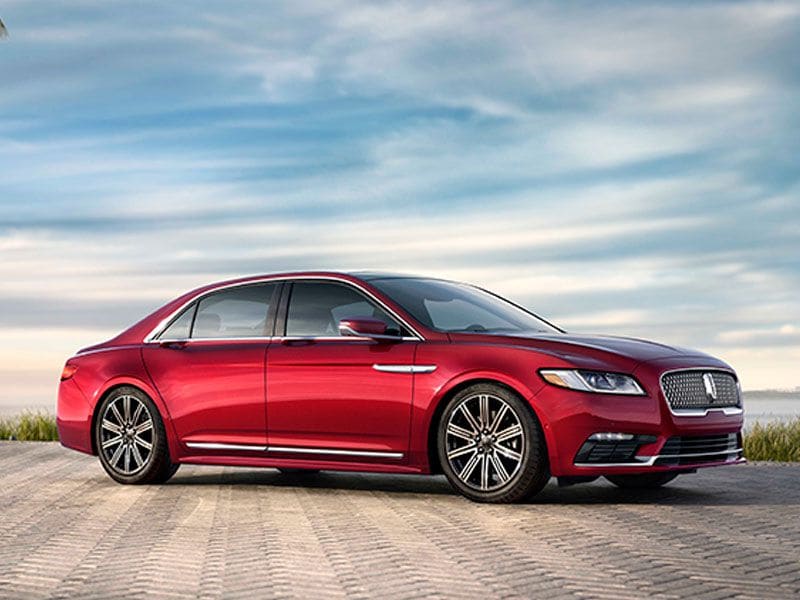
Photo by Lincoln
7. Mass VS MPG
Nevertheless, mass is the enemy in every area of dynamic development, including fuel economy. Turning the wick to full tilt boogie on the 3.0—the only Conti engine we’ve experienced so far—provokes a healthy thirst, as well as satisfying haste. The EPA predicts this version of the car will achieve 16 mpg in the urbs, 24 on the highway. Achieving these results requires more throttle discipline than we were able to bring to the game, averaging 15 mpg during our time with the car. The EPA’s most optimistic Continental fuel economy forecast, for the front-drive non-turbo V6—some 300 pounds lighter than the high trim 3.0 turbo—is 16/27. But fuel economy tends not to be a major priority in cars of this type. So never mind.
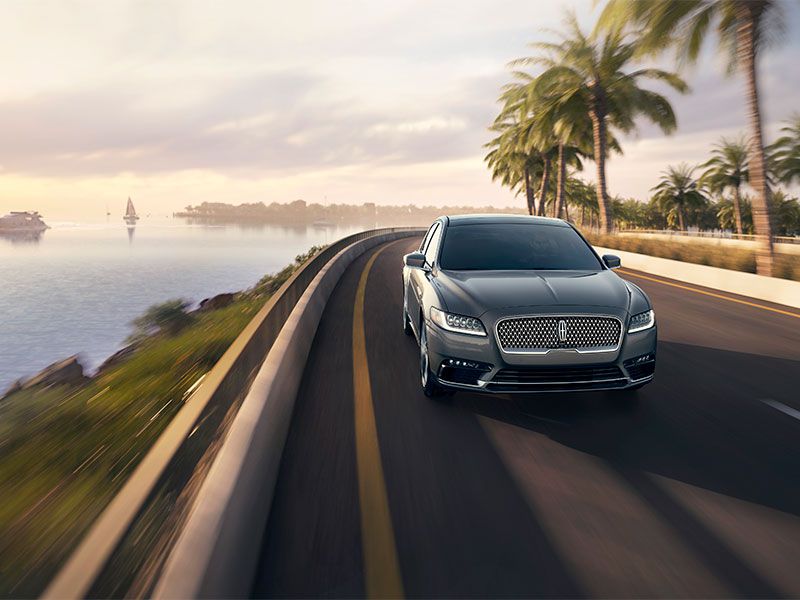
Photo by Lincoln
9. How about the inner Continental?
Exterior style is obviously important, for any car, but in the luxury realm interior design and appointments are paramount. In this respect the Continental gets mixed marks. On the downside, a prime objective of the design team seems to have been differentiating the Continental’s interior details regardless of functionality. For example, there’s no tachometer, and the speedometer looks like a one-handed Movado Museum Watch—a light pointer that sweeps around a numberless dial, and is devoid of any functional usefulness. Fortunately, there’s a digital readout. The pushbutton transmission controls take some getting used to, the controls for the power front seats are overly complicated, rear seat headroom is modest, and there’s a little too much bright trim. On the other hand, the multi-adjustable (30-way) driver’s seat guarantees perfect comfort once the driver gets the hang of the controls. Ford’s Sync system is much improved in this application, augmented by actual knobs, and the cabin is serenely quiet at all speeds, the better to hear the excellent audio system.

Photo by Lincoln
9. How about ride and handling?
As noted, with 400 hp going to the pavement via all four wheels, the Conti is capable of surprising haste. However, getting away from a stop with more decorum is tricky; using even a small percentage of the throttle travel produces something close to full power. Beyond that, the 6-speed automatic could be smoother, and its responses in manual mode are leisurely. It’s also worth noting that the Continental contends in a market where 7- and 8-speed automatics are the norm. Impressive chassis rigidity and gratifying roll stiffness, give this big sedan respectable responses in quick maneuvers, and the electric power steering is accurate by class standards. The tradeoff for minimal body roll is ride quality that gets a little brittle on gnarly pavement. But in general, the Continental has a feel of solidity and quality. And if the car doesn’t turn heads everywhere it goes, it certainly gets the attention of drivers piloting Lincoln MKZs.
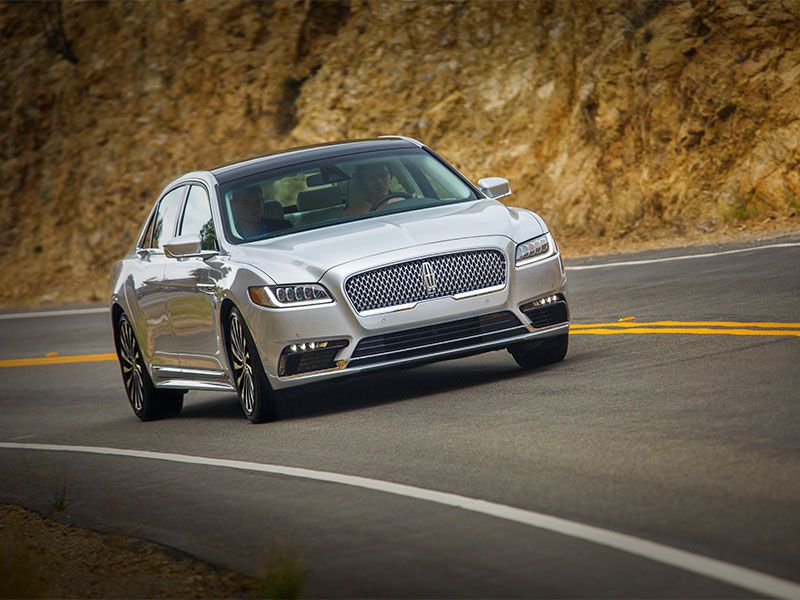
Photo by Lincoln
10. What’s the bottom line?
There are four Continental trim levels—Premier (from $45,485), Select (from $48,440), Reserve (from $54,480), and Black Label (from $63,840). Add $2000 for all-wheel drive. The 3.0-liter turbo is standard in the Continental Black Label, optional in the Reserve (from $60,105), which includes all-wheel drive. Our test car was a Reserve model with the 3.0-liter option ($3250), 30-way adjustable front seats ($1500), a Luxury Package ($5000), a rear seat package ($4300), a technology package ($3100) that included various driver assist features such as lane departure warning, a 360-degree camera, adaptive cruise control, pre-collision assist with pedestrian detection, a suite of safety features that one might expect to be standard at this price level. All told, the options added $18,965 to the window sticker, for an all-in total of $75,960. And it’s possible to go even higher, with the Black Label version. At that level the Continental’s value proposition gets to be a hard sell. Nevertheless, the eyes have it (Bentley’s discontent notwithstanding); the luxury quotient is there even without all the extras; and sales so far have been encouraging. And that’s the review that really matters.
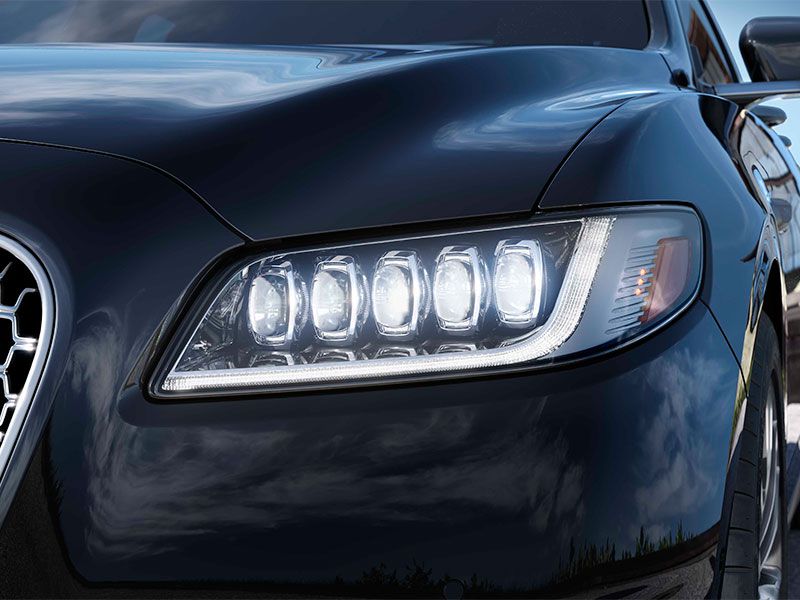
Photo by Lincoln